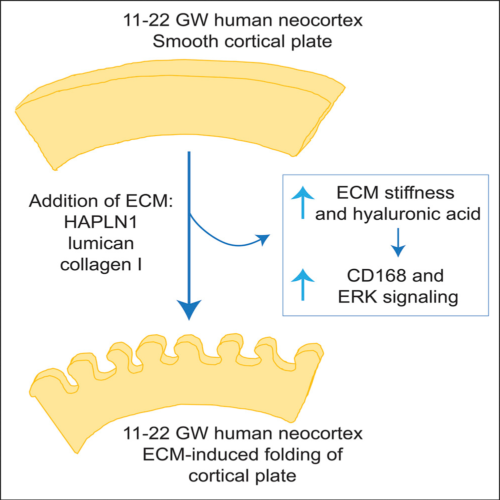Extracellular Matrix Components HAPLN1, Lumican, and Collagen I Cause Hyaluronic Acid-Dependent Folding of the Developing Human Neocortex.
Neocortical expansion, thought to underlie the cognitive traits unique to humans, is accompanied by cortical folding. This folding starts around gestational week (GW) 20, but what causes it remains largely unknown. Extracellular matrix (ECM) has been previously implicated in neocortical expansion and here we investigate the potential role of ECM in the formation of neocortical folds. We focus on three specific ECM components localized in the human fetal cortical plate (CP): hyaluronan and proteoglycan link protein 1 (HAPLN1), lumican and collagen I (collectively, HLC). Addition of HLC to cultures of human fetal neocortex (11-22 GW) caused local changes in tissue stiffness, induced CP folding, increased CP hyaluronic acid (HA), and required the HA-receptor CD168 and downstream ERK signaling. Importantly, loss of HA reduced HLC-induced and 22 GW physiological nascent folds. This was altered in samples with neurodevelopmental disorders, indicating it may be a useful system to study such disorders.

- Neuron. 2018 Aug 22;99(4):702-719
- 2018
- Neurobiology
- 30078576
- PubMed
Enabled by:
